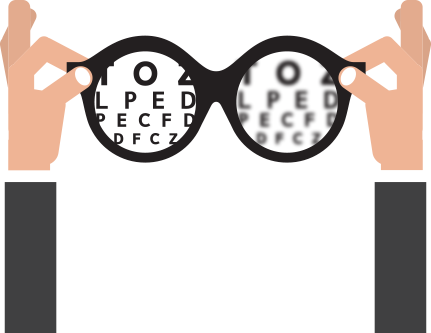You are now being directed to a third party website. Please note that this website is for convenience of the user. spectacularkids is not collecting, storing, or accessing any personal data of the user, and all the information collected, stored, and accessed herein is with the third party https://myeyedoctor.in/ website. You expressly consent to share all your details with https://myeyedoctor.in/
The risk of Myopia in children increases by 3X times when both parents are Myopic1.
In India, more than 40% of young population is at risk of developing Myopia2.
50% of the world’s population will be Myopic by 20503.


Myopia or near-sightedness, means that the child can see close things clearly but has trouble seeing things far away. It happens because the eyeball is slightly longer than normal from front to back, causing light rays to form images in front of the retina4.
Yes, the severity of myopia increases in childhood, leading to the progression of Myopia. It is a condition wherein the vision of the child keeps on declining as they grow into adolescence3.
Know MoreThe incidence of Myopia
is increasing and it is
estimated that
 of the world’s
of the world’s Children are getting Myopic at an earlier age.5
Rapid progression leads to higher levels of Myopia.5
Early onset leads to rapid Progressive Myopia.5
Higher levels of Myopia increases risk of progressive Myopic disease.5
The immediate thing you can do is limit your child's screen time and ensure more hours are spent outdoors. During the growth spurts of the pre-teen and teen years, Myopia can worsen. Thus, reduction of
visual stress becomes important.